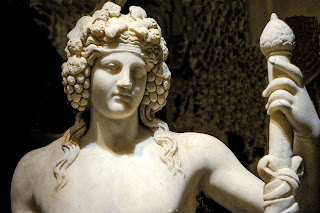Dıonysus and the Cyborg
A story about the Greek god of wine, Dionysus, tells about how Dionysus was first assigned male at birth, then lived as a girl in adolescence, and later rejected any gender identity at all. It is discussed that Dionysus can be used to highlight how gender and sexuality could be fluid in the ancient world, challenging the idea that non-binary gender identities are a new intention. The Cult of Dionysus is the rejection of cultural norms in Ancient Greece.
This Cult of rejecting binaries might bring us a contemporary theory of cyborgs as a way of going beyond binaries in the technological age. Donna Haraway defines the cyborg as a fusion of animal or human and machine. It is more than a robot; a cyborg is an organism whose abilities and functions are augmented through a cybernetic system. A hybrid of machine and organism, a creature of social reality blurs the boundaries between fiction and reality. A cyborg brings together things that we consider incompatible, just like Dionysus. Cyborg has no origin; as she puts it, “they are illegitimate offspring of militarism and patriarchal capitalism,” cyborg as being between fiction and reality. At the core of her arguments, Haraway challenges the modern subject, breaking down distinctions between machine vs. organic, human vs. animal, physical vs. nonphysical, natural vs. technological, social reality vs. fiction, and feminine vs. masculine by offering cyborg.
While cyborgs have existed in cinema and literature for many years, we see them around as well. Neil Harbisson, a cyborg artist and activist for transspecies rights, is the world’s first legally recognized cyborg with an antenna implanted in his skull. Besides being legally recognized as cyborgs, we are all surrounded by and live with machines, automats, and artificial intelligence. They are used in medical operations, military operations, etc. The organs could be replaced with artificial devices. People wearing Google Glass or even using laptops could even be called a cyborg. Other than our bodies, our living spaces and our relationship with nature are also changing and becoming more hybrid as machine & organic or natural & technological. Haraway describes this coupling of fiction and social & bodily reality as fruitful; these two binaries are imagination and material reality, and they are the centers structuring any possibility of historical transformation. In the end, a cyborg, like Dionysus, can be perceived as a way of queering the binaries.




Yorumlar
Yorum Gönder